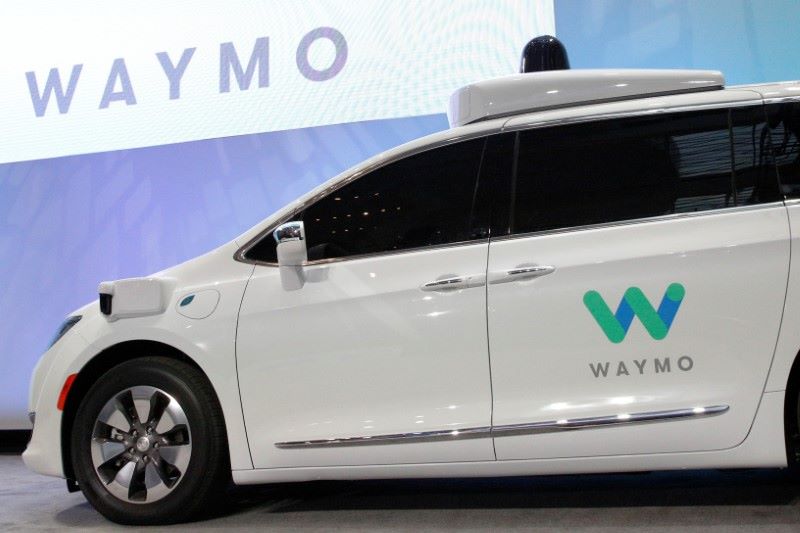Nandini Roy Choudhury, writer
Brief news
- Waymo has raised over $5.6 billion to expand its robotaxi service beyond Los Angeles, San Francisco, and Phoenix, with a total capital of $11.1 billion.
- The funding will enhance the Waymo Driver for business applications and expand partnerships, including with Uber in Austin and Atlanta.
- Waymo’s autonomous vehicles are reported to crash less frequently than human drivers, despite some safety incidents, and they plan to test in harsher winter conditions.
Detailed news
In order to extend its robotaxi service outside the cities of Los Angeles, San Francisco, and Phoenix, where it now operates, Waymo has successfully completed a fundraising round exceeding $5.6 billion.
Alphabet, the parent company of Google, is the owner of the autonomous car initiative. Alphabet was also the investor that led the series C investment in Waymo. Other investors that contributed earlier include Andreessen Horowitz (a16z), Fidelity, Perry Creek, Silver Lake, Tiger Global, and T. Rowe Price.
Waymo co-CEOs Tekedra Mawakana and Dmitri Dolgov stated in a statement to CNBC that the funding would be allocated to the advancement of the Waymo Driver for business applications and expansion.
“We will continue to expand our partnership with Uber in Austin and Atlanta, as well as in San Francisco, Phoenix, and Los Angeles, to welcome more riders into our Waymo One ride-hailing service,” they wrote.
The series C funding takes Waymo’s total capital raised to $11.1 billion, following the $3.2 billion and $2.5 billion raised in two previous rounds. In July, Ruth Porat, the Chief Financial Officer of Alphabet, disclosed that the parent company would allocate up to $5 billion over a multiple-year period to Waymo.
Waymo is the sole company to operate a commercial robotaxi service in multiple major metro areas, despite the fact that numerous companies, including the well-funded fledgling Wayve, are testing autonomous vehicles (AVs) on public roadways in the United States.
Some women have adopted the service due to their safety concerns regarding riding with anonymous human chauffeurs. It has even been employed by parents to transport their teenagers to school when other transportation options were perceived as less secure or expedient.
The Waymo One app enables passengers in Los Angeles, Phoenix, and San Francisco to summon their robotaxis, which now conducts over 100,000 weekly journeys. Waymo and Uber have entered into a partnership to introduce their robotaxi service in Austin, Texas, which is the location of Tesla’s headquarters.
For more than a decade, Tesla CEO Elon Musk has expressed his enthusiasm for self-driving vehicles. He announced this week that Tesla will provide an autonomous ride-hailing service in Texas and California next year. This service will be available after the company enhances the partially automated systems in its current vehicles, which still necessitate a human driver.
Cruise, which was owned by General Motors, was Waymo’s closest competitor in the United States until it ceased operations in October 2023. In this incident, a pedestrian was dragged 20 feet by a Cruise AV in San Francisco after she was initially injured by a human driver in another vehicle. Cruise is in the process of reestablishing its service and is also planning to collaborate with Uber.
Self-driving vehicle manufacturers in the United States must continue to demonstrate that their technology is safer to operate than taxis and lorries with human pilots. According to a survey conducted by the Pew Research Center, nearly two-thirds of respondents in the United States did not wish to travel in an autonomous passenger vehicle if they were given the chance, as previously reported by CNBC.
According to Timothy B. Lee, author of Understanding AI, Waymo’s self-reported data indicates that their vehicles crash “far less frequently than human drivers on public roads.”
Nevertheless, Waymo has implemented software recalls to enhance the safety of its self-driving systems, and its autonomous vehicles have occasionally obstructed traffic, traveled the wrong way down the street, or been involved in collisions. However, none of these incidents have resulted in a known fatality or grievous injury.
Waymo’s next-generation robotaxi is a Geely Zeekr that is outfitted with the company’s own bespoke sensors and an artificial intelligence driven “Driver.” In addition, Waymo recently reached an agreement with Hyundai to form a strategic collaboration that will last for many years. This cooperation will allow Waymo to supplement its fleet of robotaxis with Hyundai’s Ioniq 5 electric car.
In the month of August, Waymo said that it will also test its autonomous vehicles in harsher winter weather conditions, including as in northern California, upstate New York, and Michigan. This was done with the intention of someday delivering robotaxi services outside of the sunbelt region and eventually around the world.
Source : CNBC News




